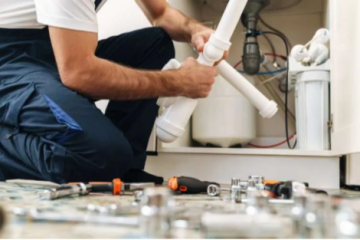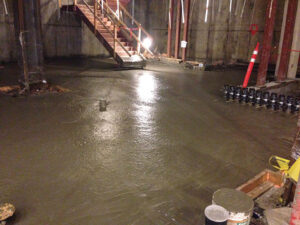Ah, the rain. In many parts of Australia, a good downpour is a welcome sight. It fills the tanks, greens the garden, and generally brings a sense of relief. But if you have a pool, you might be looking at those storm clouds with a different kind of worry. A heavy rainstorm can seem like a disaster for your pool, turning your crystal-clear water into a murky mess.
The truth is, rain can and does affect your pool water in several significant ways. It’s not just about the extra water; it’s about what that water brings with it and how it changes your pool’s delicate chemical balance. Understanding these effects is the key to a quick and easy post-rain cleanup, ensuring your pool stays safe, clean, and ready to swim in.
The pH Problem: Why Rain Throws Your Chemistry Out of Whack
The most immediate and critical effect of rainfall on your pool is on its pH level. Rainwater is naturally slightly acidic, with a typical pH of around 5.6. This is due to atmospheric carbon dioxide dissolving in the water to form carbonic acid. When this acidic rainwater enters your pool, it lowers the overall pH of your water.
Why is this a problem?
- Reduced Chlorine Effectiveness: Chlorine, your pool’s primary sanitiser, works best within a specific pH range (7.4 to 7.8). When the pH drops below this, the chlorine becomes less effective at killing bacteria and algae. This is a common reason why pools can go green after a storm.
- Corrosion and Damage: Low pH water is corrosive. Over time, it can cause damage to your pool’s surfaces, including etching on concrete and plaster finishes, and can even corrode metal components like ladders, pump parts, and heaters.
The Contaminant Cascade: What Rain Washes In
Rain doesn’t just fall from the sky; it washes over your entire backyard and roof before landing in your pool. This process brings with it a whole host of contaminants that can quickly turn your pool from sparkling to sketchy.
- Organic Debris: Leaves, twigs, dirt, pollen, and even the unfortunate insect all get washed into your pool. This organic matter is a food source for algae and bacteria, and as it breaks down, it puts a heavy strain on your sanitiser levels.
- Algae Spores: Algae spores are everywhere, floating in the air and on surfaces. Rainwater collects these spores and deposits them directly into your pool. Combined with a drop in chlorine effectiveness from the low pH, this creates the perfect conditions for a full-blown algae bloom.
- Nitrates and Phosphates: These are nutrients found in lawn fertilisers, soil, and even the atmosphere. Rainwater washes these into your pool, and they act as a superfood for algae, causing it to grow at an accelerated rate.
- Total Dissolved Solids (TDS): Every time a contaminant enters your pool and dissolves, it contributes to the TDS level. Over time, high TDS can lead to cloudy water and make your chemicals less effective.
Dealing with the Aftermath: Your Post-Rain Pool Recovery Plan
So, the storm has passed. Don’t panic. With a bit of proactive effort, you can get your pool back in shape quickly.
Step 1: The Physical Clean-Up
Start by physically removing as much of the debris as possible. Use a skimmer net to get the leaves and other large bits off the surface. Then, use a pool cleaner to vacuum the bottom. This is a crucial first step, as it removes the fuel for algae and bacteria growth.
Step 2: Balance the Water Chemistry
This is the most important step. As soon as the rain stops, test your pool water.
- Check and Adjust pH: Use a pH increaser (usually sodium carbonate or soda ash) to bring the pH back up to the ideal range of 7.4-7.8.
- Test and Boost Sanitiser Levels: Once the pH is balanced, test your free chlorine level. It will likely be very low. Shock your pool to raise the chlorine level and kill any bacteria and algae that have started to grow. A good shock treatment will raise the chlorine level to around 10 ppm for a few hours.
Step 3: Run Your Filter
After you’ve done the physical clean-up and balanced the chemicals, run your filter continuously for at least 24 hours. The filter will work hard to remove all the fine particles and contaminants that are still suspended in the water, helping to restore that crystal-clear sparkle.
Step 4: The Follow-Up
Keep a close eye on your pool for the next few days. Test the water daily, especially the chlorine and pH, and make any necessary adjustments. You might need to add a small dose of clarifier or an algaecide to prevent any lingering problems from taking hold.
Prevention is Better Than a Cure: Preparing for Rain
You can’t stop the rain, but you can prepare your pool to handle it better.
Maintain a Higher Water Level: If a storm is predicted, lower your pool’s water level a bit. This gives the pool more room to handle the extra rainfall without overflowing.
Boost Your Sanitiser: Add a little extra chlorine or sanitiser to your pool before the rain hits. This gives the water extra protection and helps it cope with the influx of contaminants.
Cover Your Pool: The simplest and most effective way to protect your pool is to cover it. A proper pool cover will prevent most of the rainwater and debris from entering the pool, saving you a lot of work later.
The Final Thought
In conclusion, rain isn’t necessarily a bad thing for your pool, but its effects on water chemistry and cleanliness require attention. By understanding the challenges it presents—primarily a drop in pH and an influx of contaminants—you can be prepared. A quick post-rain clean-up with the best pool cleaner and chemical adjustment will ensure your pool remains a sparkling and safe oasis, no matter what the weather throws at it. So next time you hear a storm brewing, you’ll know exactly what to do.






